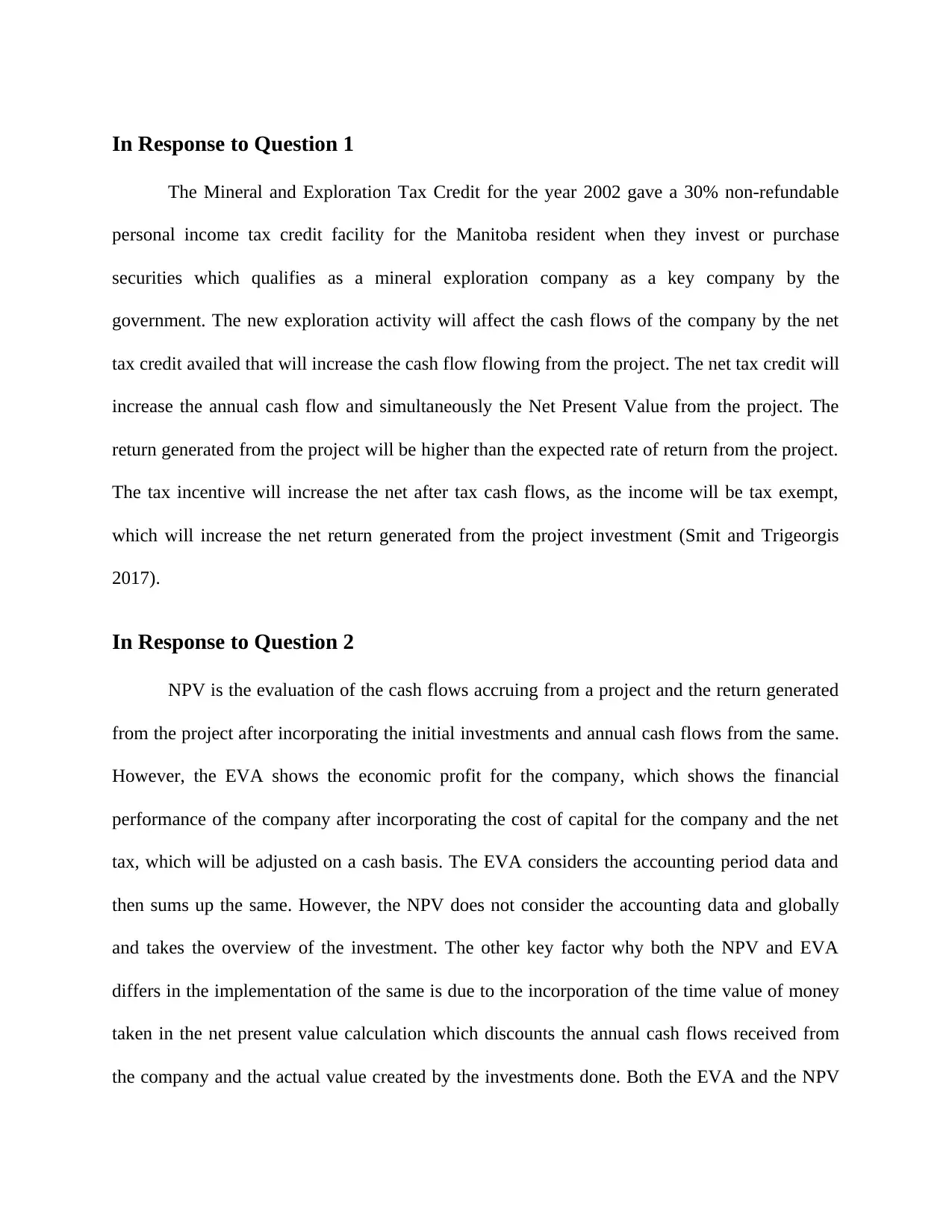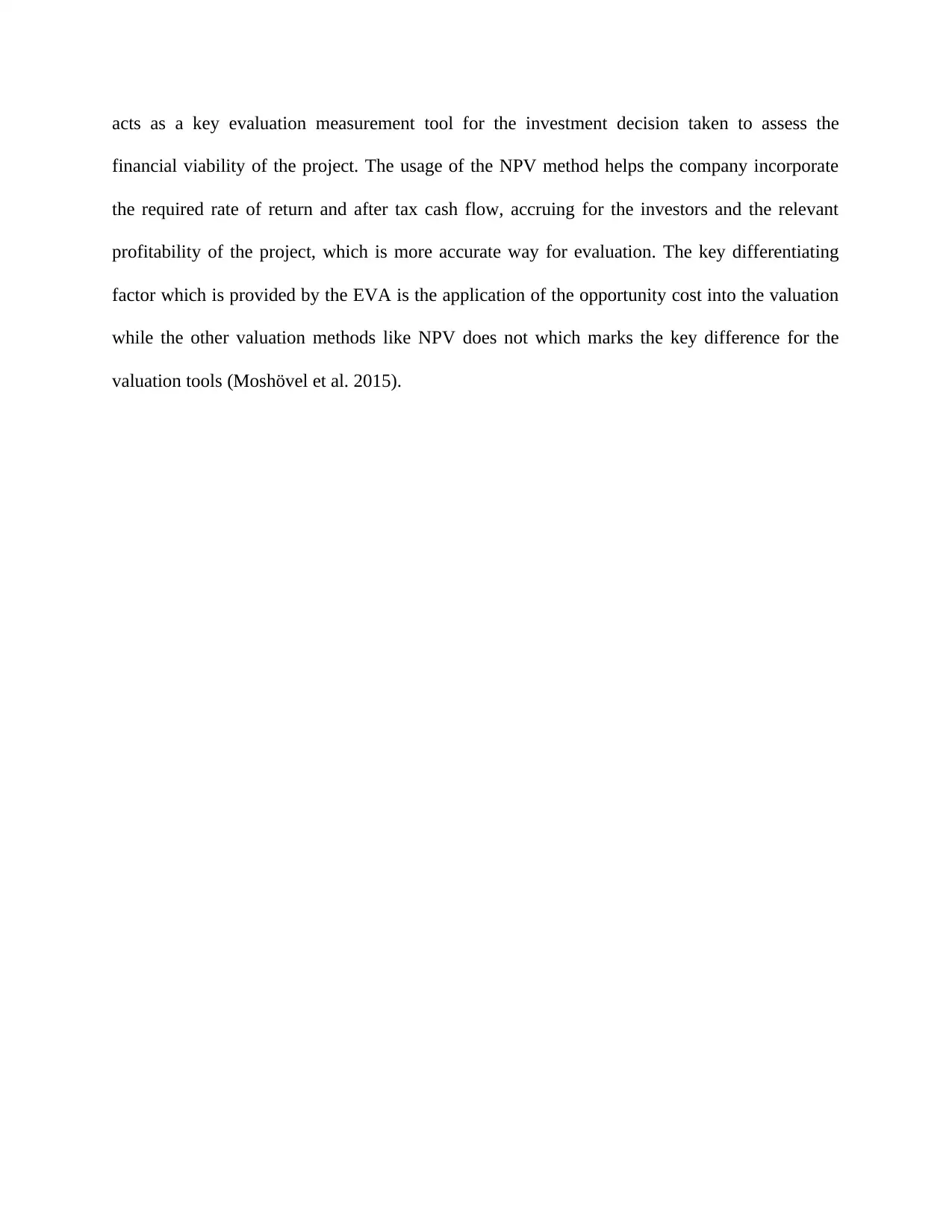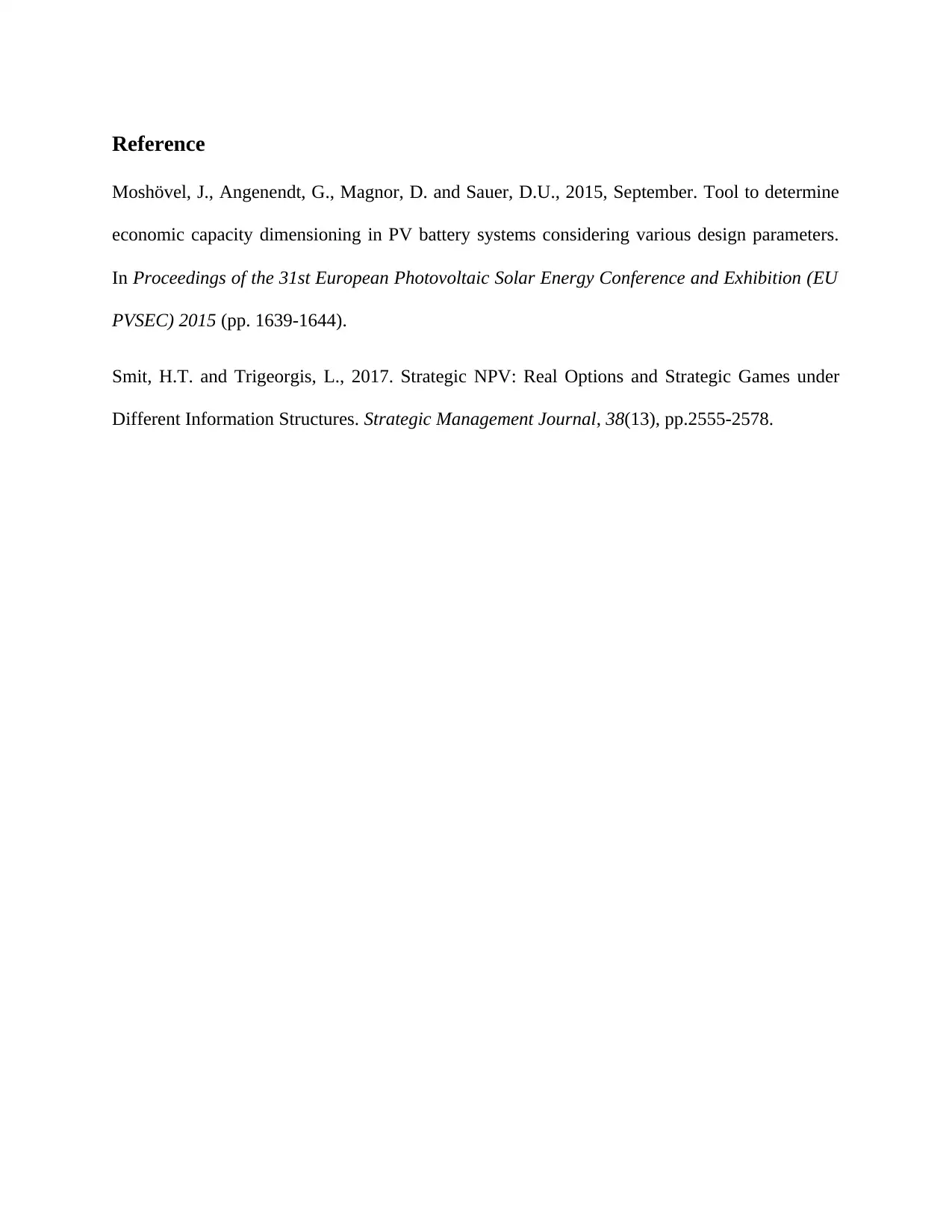University Finance Report: Tax Incentives and Project Valuation
VerifiedAdded on 2023/05/30
|5
|573
|117
Report
AI Summary
This finance report addresses two key questions related to capital investment and valuation. The first section examines the impact of tax incentives, specifically the Mineral and Exploration Tax Credit in Manitoba, on new exploration activity. It explains how such incentives can affect a company's cash flows and increase the Net Present Value (NPV) of a project. The second part of the report delves into the mechanics of Economic Value Added (EVA), comparing and contrasting it with NPV as a capital budgeting and valuation tool. It explains how EVA measures economic profit and highlights the differences in implementation between EVA and NPV, particularly regarding the consideration of the time value of money and the incorporation of opportunity costs. The report concludes by emphasizing the importance of both methods in assessing project viability and making informed investment decisions.
1 out of 5












![[object Object]](/_next/static/media/star-bottom.7253800d.svg)